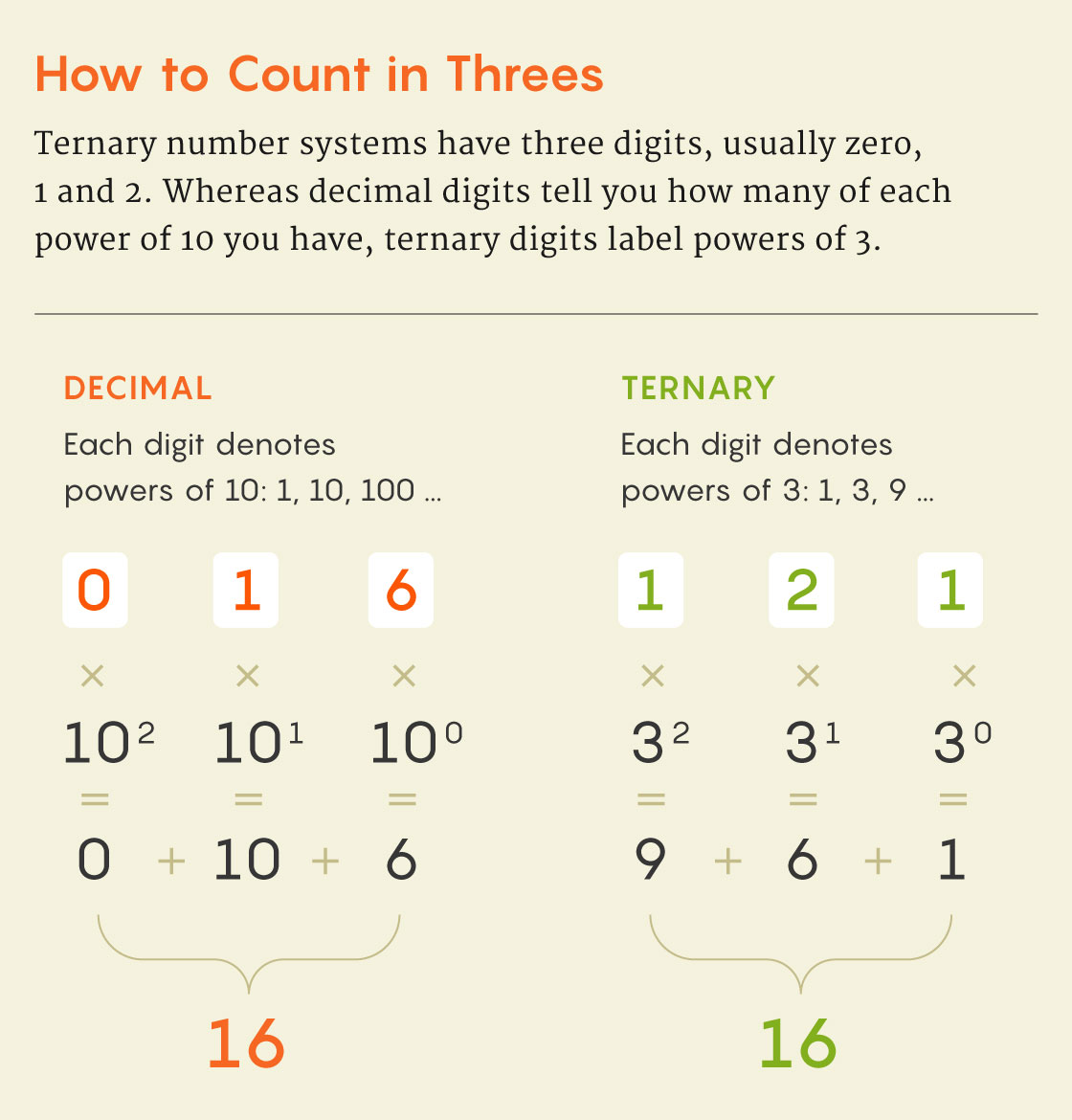
Stephen Ornes writing in Quanta Magazine:
To see why, consider an important metric that tallies up how much room a system will need to store data. You start with the base of the number system, which is called the radix, and multiply it by the number of digits needed to represent some large number in that radix. For example, the number 100,000 in base 10 requires six digits. Its “radix economy” is therefore 10 × 6 = 60. In base 2, the same number requires 17 digits, so its radix economy is 2 × 17 = 34. And in base 3, it requires 11 digits, so its radix economy is 3 × 11 = 33. For large numbers, base 3 has a lower radix economy than any other integer base. (Surprisingly, if you allow a base to be any real number, and not just an integer, then the most efficient computational base is the irrational number e.)
In addition to its numerical efficiency, base 3 offers computational advantages. It suggests a way to reduce the number of queries needed to answer questions with more than two possible answers. A binary logic system can only answer “yes” or “no.” So if you’re comparing two numbers, x and y, to find out which is larger, you might first ask the computer “Is x less than y?” If the answer is no, you need a second query: “Is x equal to y?” If the answer is yes, then they’re equal; if the answer is no, then y is less than x.
The real advantage is being able short cut many conditional statements at the hardware level. However this would involve a complete re-working of the binary foundations the industry has been built on over the last 50 years.